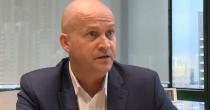- May 12, 2020
- views
New infections rise as Germany reopens
COVID-19 infections seem to be on the rise again in Germany mere days after Chancellor Angela Merkel announced the country’s gradual return to normal. Official data from the Robert Koch Institute (RKI), which monitors the pandemic, showed on Sunday, 10 May, the reproduction rate (R0) of the disease rose to 1.1 – meaning 10 COVID-19 patients infect 11 others on average. The news comes as the country saw new infection clusters at slaughterhouses and care homes.
According to the RKI, the infection rate can only be considered slowing down and under control if the R0 stays below one. This new development is something that “would need to be watched very closely in the coming days,” as it is too soon to draw conclusions from the rise in infections.
Germany’s R0 was at 0.65 on Wednesday, 6 May, when Merkel declared that the “first phase” of the pandemic is over in the country. Federal states relaxed social restrictions shortly after. Playgrounds and most shops have reopened and some children have returned to their classrooms. Some states have also gradually reopened places of worship, gyms and restaurants.
Local authorities have agreed to pull an “emergency brake,” or the reimplementation of some restrictions should the infection rate rise above 50 per 100,000 residents in a week. So far, the RKI says that this has already happened in at least three districts.



